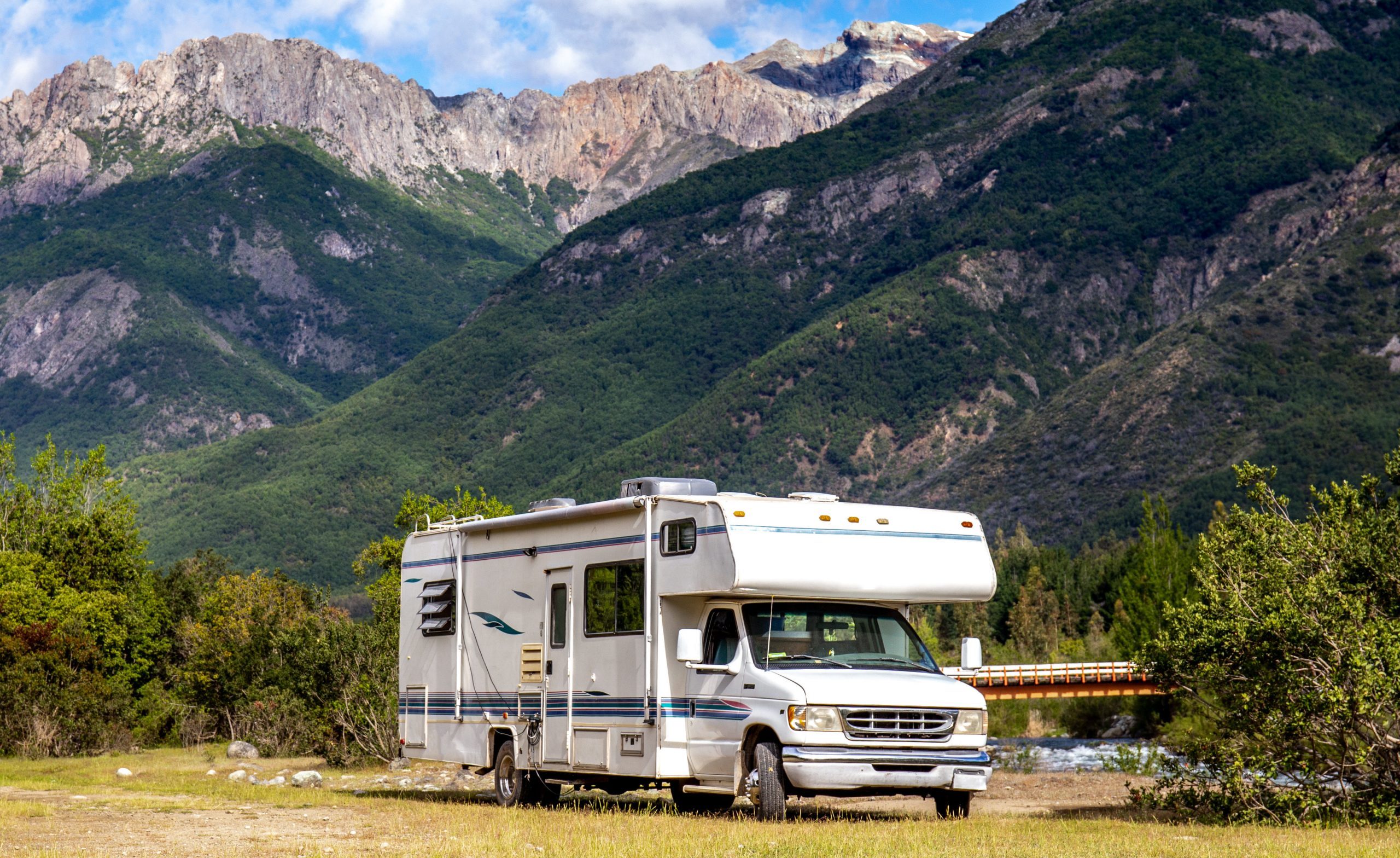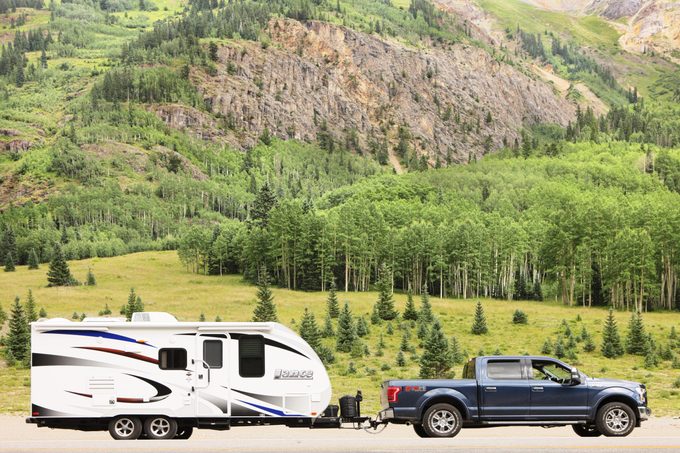Living in an RV fulltime allows you to see the world and experience true freedom—but it's not free. Find out how much cash you need to be a full-time RVer.

How Much Does It Really Cost to Live in a RV?

Living in an RV may seem like a dream—and for some, it’s a reality. Living in an RV lets you see the country or world while living in your own portable home. However, is it cheaper than living in a brick and mortar home? These full-time RVers shed light on how much it really costs to live in an RV.
Your new home: Up to $300,000
The cost of a motorhome or travel trailer is by far the biggest investment of an RV lifestyle. RVs and travel trailers can cost between $10,000 and $300,000—depending on the style and features. “Unless you have cash upfront, you will need to finance your RV,” Regina Caligiuri, a full-time RVer. “Since it’s a recreational vehicle, the interest rates are usually higher than an average car loan.”
Additional vehicle: $40,000++

Speaking of insurance, insurance for your RV is not like car insurance, rather it’s similar to homeowner’s insurance and it requires a separate policy. RV insurance is fairly reasonable, about $350 per year or more depending on if you are covering a motorhome or a travel trailer. There are also ad valorem taxes for RVs in some states. “Insurance runs about $300 per year and registering the truck and trailer is also about $300 per year,” says Robyn Robledo, a full-time RVer.
Camping fees: Up to $50/night
Not every place will let you park your RV for free. Campgrounds and RV resorts have different costs based on location, time of year, and length of stay. Average costs for many resorts or campgrounds are around $30 and $50 per night but you can usually get a discount by the month or week. The fees typically cover water, electricity, cable, WIFI, sewage, and use of facilities such as bath, shower, and laundry. The more amenities the resort has, the more money it will cost per night.
Of course, there are some options for camping for free, but be prepared to “dry camp.” This means there will be no access to water, sewage, or electricity. You will need to haul out your own waste—there are typically no dump stations in these areas. Many of these “free campgrounds” are located on public lands run by the Forest Service Land, Bureau of Land Management, or Wildlife Management Areas. If you are looking for a place to camp out overnight, there are several retailers that will allow you to park overnight for free such as Cabelas, Camping World, Cracker Barrel, Walmart, rest stops, and truck stops, but do not provide any type of hookups or amenities.
Fuel: Varies

Real-life costs for RVers
Other costs for full-time RV living aren’t much different than living in a home. There’s food, cell phone, medical insurance, and other wants and needs that will make you more comfortable on the road. Here’s how much a few real, full-time RVers spend on their to live in their RVs:
- “My overall costs are roughly $2,000 per month: $200 for insurance, $400 for gas and maintenance, $800 for food, $80 for a gym membership, $80 for phone, and $500 for miscellaneous. However, in the summer when I travel much more, these costs can easily reach $3,000 or more per month.” —Sam Kemmis, travel rewards expert at NerdWallet
- “The RV Park we stay at is $1,085 a month plus $159 for an extra car. Insurance runs about $300 per year and registering the truck and trailer is also about $300 per year. Obviously we also have regular living expenses like food, gas, clothes, and health care but those would be the same for us in a house as they are in an RV.” —Robyn Robledo, Blogger at Nomads With A Purpose
- “Our annual spend is under £30,000 (about $39,046.50) per year for two people, four dogs, two cross-channel return journeys (from England to the European continent), and six months skiing. We could spend considerably less if we did not have these luxuries.” —JackieLambert, Blogger at World Wide Walkies
















